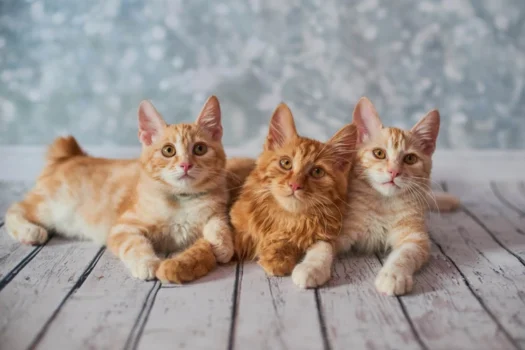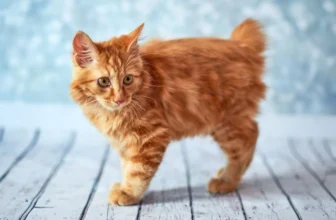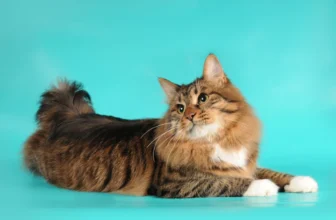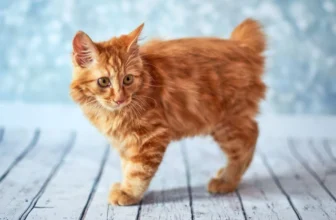As cat lovers, we have all come across the American Bobtail breed at some point. The American Bobtail is a unique, wild-looking cat breed that has captured the hearts of many with its distinctive features and playful personality. But have you ever wondered about the origins of this breed or how it has evolved over the years? In this article, we will take a closer look at the history of the American Bobtail breed, from its wild cat ancestors to the current popular breeding programs and associations. So buckle up and get ready to explore the fascinating journey of the American Bobtail breed!
The Origins of the American Bobtail
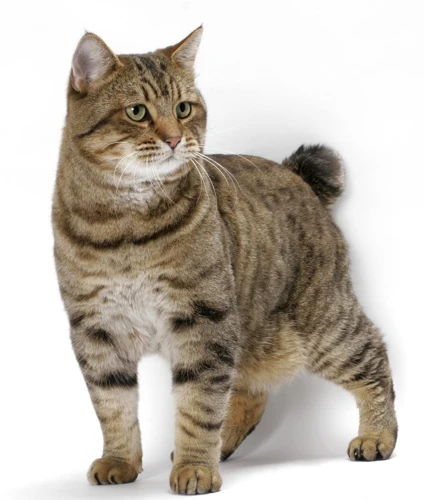
The American Bobtail breed is a fascinating blend of North American wild cats and domestic breeds. The Origins of the American Bobtail breed have been subject to much speculation and debate over the years. While the breed’s history is somewhat shrouded in mystery, there are several theories about its origins. Some experts suggest that the breed is descended from cats that were brought to North America by early settlers, while others believe that the breed is the result of natural selection in the wild. Regardless of its origins, the American Bobtail has become a beloved breed in the United States.
North American Wild Cats
The American Bobtail breed has a fascinating history that can be traced, in part, to the North American wild cats. These wild cats had a significant influence on the development of the breed as we know it today.
The North American wildcat species native to the United States include the Bobcat, Lynx, and Cougar. These wild cats were known for their distinctive physical features, including tufted ears, a compact and muscular body, and a short tail. Their short tails are a defining feature that is closely associated with the American Bobtail breed.
Bobcats, in particular, were a primary influence in the development of the breed. They were known to have any variety of tail lengths ranging from short to long. The founder’s goal for the breed was to create a domesticated cat that had this characteristic of a short tail.
Despite its wild origins, the American Bobtail is known for its affectionate and playful personality, making it an ideal pet for a family. The breed has come a long way since its wild beginnings, and today it is recognized by major cat associations around the world.
Fun fact: The American Bobtail breed is also believed to have some Siamese and Himalayan cat influences.
If you want to know more about the fascinating history of the American Bobtail breed, you can check out this link: /fascinating-history-american-bobtail-breed/.
Siamese and Himalayan Cats
During the development of the American Bobtail breed, breeders introduced Siamese and Himalayan cats to infuse some new qualities into the breed. Siamese cats are known for their elegant appearance with short, fine coats, and sleek bodies. They have striking blue eyes, and that is a result of a genetic mutation that causes the lack of pigment in their eyes. Siamese cats are also quite vocal and have a unique voice that some people love.
Similarly, Himalayan cats were also introduced to the American Bobtail breed to create a unique breed with a distinct personality. Himalayan cats are a cross between Siamese and Persian cats, and they feature luxurious long hair and a very docile personality. They have short legs and broad heads, which is a feature also passed on to the American Bobtail breed.
The crossbreeding experiments were successful, and the combination of the qualities of Siamese and Himalayan cats helped to develop the extraordinary genes of the American Bobtail breed. It’s hard to imagine the breed as it is today without the influence of these two breeds.
Siamese and Himalayan cats are still highly valued and desired breeds among cat lovers. Some breeders are still using them to introduce new traits into various breeds. However, the crossbreeding of these breeds is quite challenging and requires significant expertise in genetics.
If you want to find out more about the origins of the American Bobtail breed, check out our article on the subject. If you’re interested in the breed’s popularity in the U.S, read our article on it. Additionally, you can learn about the breed’s connection to Native American culture in our article.
The Development of the American Bobtail Breed
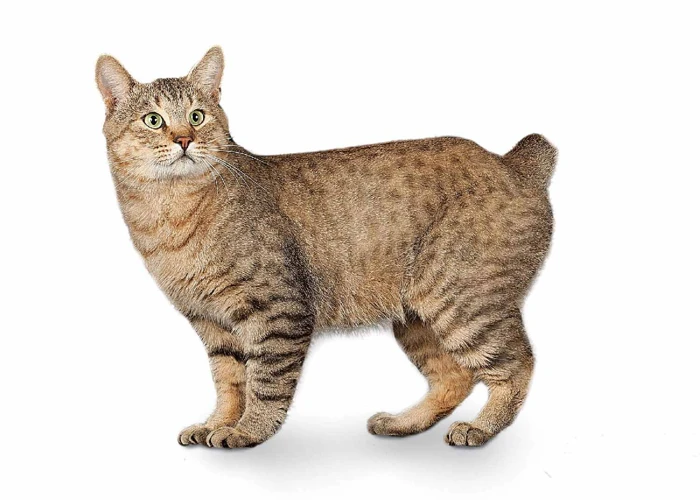
As the American Bobtail breed began to gain popularity, breeders worked to develop a consistent standard for the breed. This was no easy task, as the breed originated from a combination of various breeds and wild cats. Through careful selection and breeding, the American Bobtail began to take on the distinctive characteristics that we recognize today. Let’s take a closer look at how this beloved breed was developed.
Founder Cats
The American Bobtail breed may have had different ancestors, but the breed as we know it today can be traced back to a few “Founder Cats” who exhibited the distinctive bobtail trait. These cats were not deliberately bred together, but their offspring perpetuated the trait and established the breed.
Yodi was one of the first known bobtail cats in the late 1960s. He was rescued from an Arizona highway and became the founding male of the American Bobtail breed. Yodi had a short, stubby tail that he carried upright and had a wild, natural look.
Miki was a female cat who was rescued in the early 1970s from an Indian reservation in Arizona. She had a naturally bobbed tail, and her offspring with Yodi led to the first documented litter of American Bobtails.
Speedy was a male cat found on the streets of Iowa in the 1980s. He had a short, thick tail and a distinctive wild appearance. Speedy became one of the most significant contributors to the breed’s development, as many American Bobtails today have his genetics.
Sher Khan was another influential cat in the breed’s development. He was a male cat with a wild look and a short tail originally sourced from the streets of Morocco. He was imported to the United States in 1988 and bred with American Bobtails to add genetic diversity.
These founder cats provided the genetic foundation for what would become the American Bobtail breed. Over time, breeders were able to develop a specific standard for the breed, which dictated coat color and pattern, body structure, and tail length. The breed continues to evolve, but the contribution of these founder cats will always be remembered.
The Beginnings of the Breed Standard
In the early years of the American Bobtail breed, there was no formal standard that governed the features and characteristics of the breed. Breeders relied mainly on their own preferences and knowledge to create consistent traits in the breed. However, in the 1980s, a group of dedicated breeders came together and created the first American Bobtail standard. This was necessary to ensure that the breed remained true to its unique traits and was recognized by cat organizations around the world.
The American Bobtail standard was designed to emphasize the features that make the breed unique. Some of the key features of the standard include a muscular body, a short tail that is slightly curved or kinked, and a large head with prominent cheeks. The coat should also be thick and luxurious, with a wild appearance that speaks to the breed’s North American heritage.
To be considered an American Bobtail, a cat must meet these standards as determined by certified cat organizations like The International Cat Association (TICA) and the Cat Fanciers’ Association (CFA). The standard was created to ensure that the breeding of American Bobtails remained responsible and consistent, which continues to be the case today.
With the creation of this standard, breeders were able to work towards consistent traits in the American Bobtail breed. They selectively bred cats to emphasize the desired features and produce cats that met the standard. This has resulted in a breed that is both distinctive and recognizable today.
The American Bobtail standard continues to evolve over time as breeders work to improve the breed’s overall health and temperament, as well as its physical features. By following this standard, breeders are able to make informed decisions about which cats to breed, ensuring that the breed continues to grow and thrive.
The American Bobtail Today
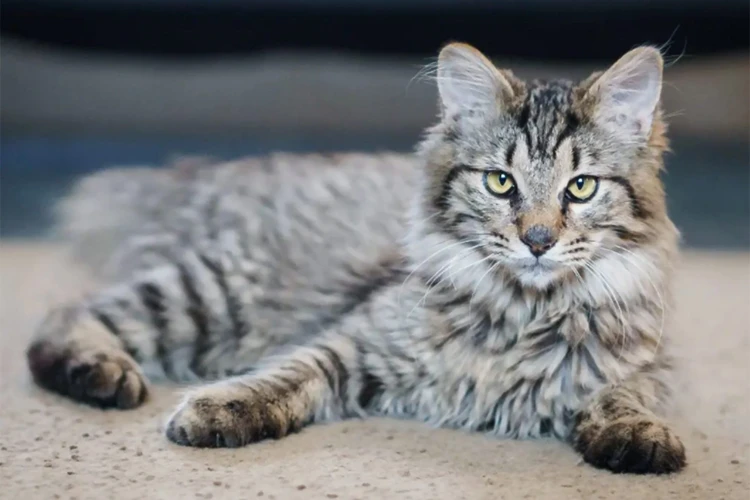
As we look at the American Bobtail today, it’s impossible not to be struck by its distinctiveness. This breed has come a long way since its origins as a wildcat hybrid, and has now become one of the most recognizable breeds in the world of domestic cats. From their distinctive features to their playful personalities, American Bobtails have won the hearts of many cat lovers. In this section, we’ll take a closer look at what makes the American Bobtail breed stand out, and explore some of the most popular breeding programs and associations. So, let’s dive right in!
Distinctive Features of the Breed
One of the most distinctive features of the American Bobtail breed is their short, stubby tails. However, not all American Bobtails have the same tail length, and some may even have tails that are longer than usual. Besides their tails, American Bobtails are also known for their muscular build and athletic ability. Here’s a table outlining some of the most notable features of the breed:
| Feature | Description |
| Tail | Their tails are short and often have a kink or curve. They may also have hair, a pom-pom, or a tuft at the end of their tail. |
| Coat | Their coat is shaggy and can come in various colors and patterns. |
| Build | They have a muscular build and are often described as athletic or sturdy. |
| Head | Their head is often squarish in shape, with strong jaws and distinctive whisker pads. |
| Personality | They are known for being friendly, social, and intelligent. They are also highly adaptable and can adjust well to different living situations. |
The American Bobtail is a highly unique and recognizable breed, with a combination of physical features and a winning personality that makes them a favorite among cat enthusiasts.
Popular Breeding Programs and Associations
The American Bobtail has become increasingly popular over the years and thus gained recognition from major breeding programs and associations worldwide. Included in these are the International Cat Association (TICA), the American Cat Fanciers Association (ACFA), and the Cat Fanciers’ Association (CFA), among others.
TICA has been instrumental in the recognition and breeding of the American Bobtail breed. In fact, TICA was the first organization to recognize the breed as a championship breed. TICA’s breed standard for the American Bobtail serves as the basis for the breed standards used by other associations.
The ACFA has also played a significant role in furthering the breed. They recognize the American Bobtail as a championship breed and provide a breed standard as well. The ACFA promotes the breeding of healthy cats and ensures that their breeders adhere to strict breeding standards.
The CFA is another major breeding program that has shown interest in the American Bobtail breed. They first recognized the breed in 2002, and it is quickly gaining popularity within the organization. The CFA breed standard is similar to that of TICA, with a few variations.
Other international breeding programs and associations recognizing the American Bobtail breed include the Governing Council of the Cat Fancy (GCCF) in the UK, and the World Cat Federation (WCF) based in Europe.
In order to maintain the breed’s standards and characteristics, reputable breeders follow a strict breeding program, adhering to established health standards, and avoiding inbreeding. Many breeders also work together to educate the public about the breed, organize shows and expos, and provide training resources for other breeders.
The American Bobtail has gained significant recognition from major breeding programs and associations worldwide, signaling its importance and legitimacy among cat breeds. Breeders are committed to preserving the breed standards while ensuring the health and well-being of the cats in their breeding programs.
Future Directions for the American Bobtail Breed
There are exciting things on the horizon for the American Bobtail breed! Breeders are working hard to continue improving the health and temperament of these beautiful cats while also emphasizing their unique physical features. Some future directions that we might see for the breed include:
Continued Health Testing: As with any breed, it’s important to ensure that American Bobtails are healthy and free from genetic disorders. Breeders will likely continue to conduct health testing on their breeding cats to identify any potential health issues and work towards eliminating them from the breed.
New Color and Pattern Varieties: While the American Bobtail already comes in a variety of colors and patterns, some breeders are working on developing new varieties. For example, some are working on breeding American Bobtails with a pointed pattern like that seen in Siamese cats. This could potentially lead to more interest in the breed and increase its popularity.
International Recognition: While the American Bobtail is a recognized breed in many countries, including the United States, it is not yet recognized in others. Breeders may work towards obtaining recognition in these countries, which could increase the breed’s popularity and lead to more international breeding programs.
The Use of Technology: With advances in technology, breeders may be able to use DNA testing to determine which cats are most likely to produce healthy offspring with desirable physical traits. This could make breeding programs more efficient and lead to healthier cats overall.
The future for the American Bobtail breed looks bright. With dedicated breeders working hard to improve the breed, we can likely expect to see more healthy, beautiful, and unique cats in the years to come.
Conclusion
In conclusion, the American Bobtail breed has come a long way since its origins as a mix between wild felines and domestic cats. The unique features of the breed, including its stubby tail and muscular build, make it a popular choice for both pet owners and breeders alike.
Through careful breeding and development of the breed standard, the American Bobtail has become a recognized breed by major cat associations such as The International Cat Association (TICA) and the Cat Fanciers’ Association (CFA).
However, like all breeds, the American Bobtail faces various challenges, including potential health issues and maintaining genetic diversity. As such, it is important for responsible breeders and breed associations to prioritize the well-being of these cats and continue to make progress in their breeding programs.
Overall, the American Bobtail is a fascinating breed with a unique history and promising future. Its distinctive features and friendly personality make it a great choice for a pet, and its popularity is only expected to grow in the coming years. As we continue to learn more about this breed and work towards its betterment, we can look forward to seeing it thrive and evolve even further.
Frequently Asked Questions
What is the history of the American Bobtail breed?
The American Bobtail breed originated in the 1960s, when a short-tailed kitten was found on an Indian reservation. This kitten was bred with a Siamese cat, which produced the breed’s unique traits.
What are the distinctive features of the American Bobtail?
Aside from their short, bobbed tails, this breed has large, expressive eyes, a muscular body, and a wild appearance. Their fur can be short or long, and comes in a range of colors and patterns.
Are American Bobtails good pets?
American Bobtails are known for their friendly and affectionate dispositions, making them excellent pets for families and individuals alike. They are also intelligent and easy to train, making them suitable for both first-time and experienced cat owners.
What should I feed an American Bobtail?
Like all cats, American Bobtails benefit from a diet rich in protein and fiber. High-quality cat food brands that include meat as the first ingredient are recommended, as well as supplements such as probiotics and omega-3 fatty acids.
Do American Bobtails require a lot of grooming?
While American Bobtails do shed, they are not particularly high-maintenance in terms of grooming. Brushing their fur once a week is usually sufficient to keep it healthy and tangle-free. They may also need their nails trimmed periodically.
What are some common health concerns for American Bobtails?
As with any breed of cat, American Bobtails may be predisposed to certain health conditions. These include hypertrophic cardiomyopathy, hip dysplasia, and bladder stones. Regular check-ups with a veterinarian can help catch any issues early on.
Are American Bobtails good with children?
Yes! American Bobtails are known for being patient and gentle with children, making them excellent family pets. Of course, as with any pet, it’s important to teach children proper handling and care techniques.
What kind of activity level does the American Bobtail have?
American Bobtails are known for being active cats, but their activity level varies from individual to individual. They enjoy playtime and exercise, but are also content to lounge around the house and unwind with their humans.
What should I look for in a breeder if I’m interested in an American Bobtail?
When looking for an American Bobtail breeder, make sure they follow responsible breeding practices and prioritize the health and well-being of their kittens. They should also be willing to answer any questions you have about the breed and provide references from previous buyers.
How do I know if an American Bobtail is right for me?
If you’re considering an American Bobtail as a pet, make sure to do your research and spend time with the breed beforehand if possible. Consider your lifestyle and living situation, as well as your ability to provide the necessary care and attention for this unique and beloved breed.

